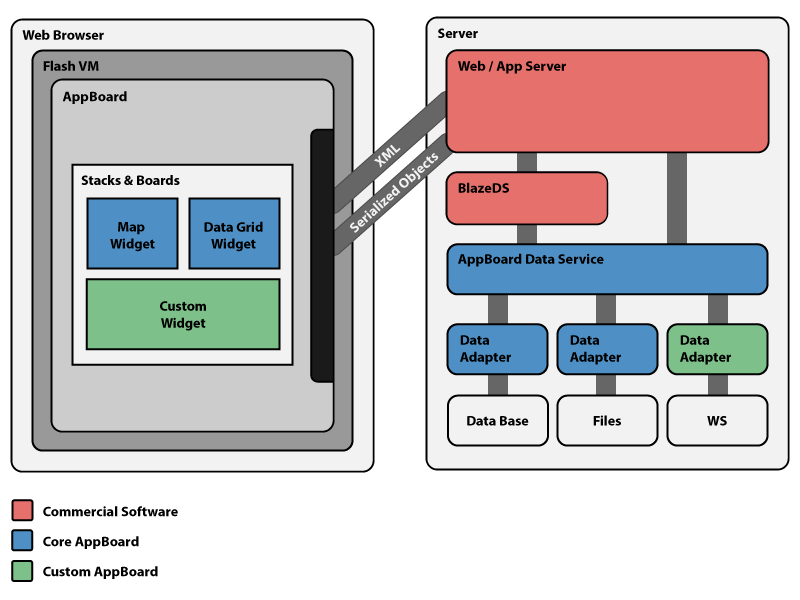Appboard/2.4/software components: Difference between revisions
imported>Jason.nicholls |
imported>Jason.nicholls |
||
| Line 23: | Line 23: | ||
=== Configuration Database === | === Configuration Database === | ||
In a default install the configuration database is purely in-memory and running within the Tomcat process. In other words, there is no external process or | In a default install the configuration database is purely in-memory and running within the Tomcat process. In other words, there is no external process or network communication. | ||
In clustering or high-availability environments AppBoard can be configured to use an external configuration database. This is via a JDBC driver and requires network connectivity to the external database. | In clustering or high-availability environments AppBoard can be configured to use an external configuration database. This is via a JDBC driver and requires network connectivity to the external database. | ||
Revision as of 04:13, 14 July 2014
Overview
AppBoard consists of a number of software components working together to deliver the overall features. In actual deployments the architecture may also include some custom (external to AppBoard) components in addition to the core AppBoard product, and any external product integrations.
This page details the individual software components. For a more general overview of how AppBoard works, refer to the Overview page.
Main Components
AppBoard Server (Apache Tomcat)
The AppBoard and enPortal server components run within a single Apache Tomcat process. In default installs this also includes the in-memory configuration database (also see below for more information).
The server process listens on two ports, the main port on all interfaces for client traffic, and the shutdown port only on the local interface. These are configurable via runtime options, including whether Tomcat is configured for HTTP or HTTPS.
The server process will also have to establish connections to enPortal proxied we applications, and AppBoard data sources. This is always unique to the deployment and depends on the mix of integrated applications in the overall solution.
AppBoard may also be configured to user an external authentication source such as LDAP-based (Microsoft Active Directory, IBM Directory Server, Oracle Directory Server, Novel eDirectory, etc...), or through custom authenticators.
Configuration Database
In a default install the configuration database is purely in-memory and running within the Tomcat process. In other words, there is no external process or network communication.
In clustering or high-availability environments AppBoard can be configured to use an external configuration database. This is via a JDBC driver and requires network connectivity to the external database.
AppBoard Clients
AppBoard clients are supported Web Browsers running the Builder or Viewer in an Adobe Flash Player plug-in.
All rendering takes place within the client and this is comprised of native flash content (via the flash plugin) and HTML frames (via the browser).
The client communicates with the AppBoard server using HTTP/HTTPS over a single port for all resources, data communications, and enPortal proxied content. Non-proxied content, and some widgets such as the Google Map or Tile Map, the client may need additional network connectivity beyond the AppBoard server.
Additional Credits
AppBoard incorporates the use of some 3rd party libraries. See the License Credits page for more information.

